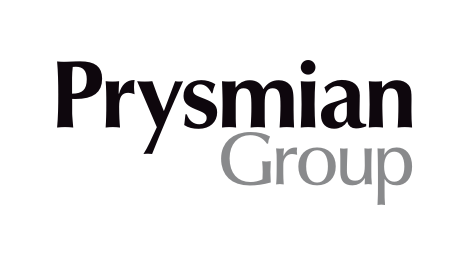Prysmian – Prysmian unveils new global brand to support its commitment to lead the energy transition and digital transformation challenges
New brand identity developed in partnership with Interbrand
Prysmian, leader in the energy transition and digital transformation, launches today, in collaboration with Interbrand — a leading brand consultancy for nearly 50 years — the group’s new brand: a new crucial asset that aims to support and amplify Prysmian’s new business strategy.
This is a true brand evolution that shapes the Company’s direction towards a new era, as part of the new strategy “Connect, to Lead”, presented on 5 October 2023 during the Capital Markets Day held in Naples. In fact, the new look of Prysmian’s global brand is a daily reminder of the group’s focus and sense of responsibility in connecting millions of people to a sustainable future and of the respect for the group’s founding values.
The group’s new brand identity stems from a deep reflection on the Company’s purpose, namely to seize the opportunities of sustainable development for the planet and to lead the energy transition and digital transformation by developing increasingly resilient, high-performing, sustainable and innovative products, while creating tangible value for its customers and the communities and areas in which the group operates. For Prysmian, sustainability is not only a business driver, but also a commitment to making a long-term contribution in terms of environment and people protection.
The new visual identity, which has been primarily developed digitally, reflects the brand’s determination to embrace new strategies and a new corporate purpose. The symbol shape reveals a hidden ‘p’, in addition to recalling the circular economy concept, while the blue-to-green gradient colour reflects the Group’s commitment to the development of renewable energy. The iconic logo, interpreted with a contemporary and dynamic design, connects the concepts of tradition and evolution. The entire visual system and the new payoff “The Planet’s Pathways” embody the role that Prysmian aims to play in shaping a better future and in paving paths for an increasingly sustainable and digital future for our planet.
“Through this rebranding, we are aligning Prysmian’s image to the changes the Group is undergoing and to the rapid evolution of our industrial sector, an evolution we intend to lead,” commented Maria Cristina Bifulco, Chief Investor Relations, Sustainability and Communication Officer, Prysmian. “The global challenges and opportunities we are facing require us to put our organisation’s strength and expertise at the service of our customers, partners and all our stakeholders to drive new forms of energy and information to every corner of the Earth”.
“We are living through a new era in which brands are increasingly important and more and more expected to convey leadership and responsibility,” stated Manfredi Ricca, Global Chief Strategy Officer, Interbrand. “The evolution of Prysmian’s brand reflects its awareness and its commitment to take a leading role in driving the energy and digital transition to shape a better future for our planet.”
SourcePrysmian Group
EMR Analysis
More information on Prysmian: See the full profile on EMR Executive Services
More information on Valerio Battista (Group Chief Executive Officer, Prysmian Group until the 2024 Annual General Meeting (April)): See the full profile on EMR Executive Services
More information on Massimo Battaini (Group Chief Operating Officer and Executive Director, Prysmian Group + Designated Chief Executive Officer at the 2024 Annual General Meeting (April)): See the full profile on EMR Executive Services
More information on Maria Cristina Bifulco (Chief Investor Relations, Sustainability and Communication Officer, Prysmian Group): See the full profile on EMR Executive Services
More information on “Connect, to Lead” Strategy – The new 5-years (2023-2027) Business Strategy by Prysmian: See the full profile on EMR Executive Services
More information on the Prysmian Sustainability Strategy: See the full profile on EMR Executive Services
More information on Interbrand: https://interbrand.com/ + Interbrand has been shaping business and culture for five decades.
Interbrand has been a world leading brand consultancy for over 45 years – having pioneered iconic work and forged many of the brand building tools that are commonplace across the industry today. In collaboration with the world’s leading brands, Interbrand’s global team of thinkers and makers are pioneering the future of brand building. By turning customers into active participants, Interbrand helps clients strengthen their brands on an ongoing basis – its approach gives them the confidence to make Iconic Moves that spark desire and create utility, driving extraordinary results.
Interbrand is a part of Omnicom’s Brand Consulting Group that sits in the Communications Consulting Network.
More information on Charles Trevail (Global Chief Executive Officer, Interbrand): https://www.linkedin.com/in/charles-trevail-0834762/
More information on Manfredi Ricca (Global Chief Strategy Officer, Interbrand): https://www.linkedin.com/in/manfredi-ricca-8721a75/
EMR Additional Notes:
- Circular Economy:
- A circular economy is a systemic approach to economic development designed to benefit businesses, society, and the environment. In contrast to the ‘take-make-waste’ linear model, a circular economy is regenerative by design and aims to gradually decouple growth from the consumption of finite resources.
- In such an economy, all forms of waste, such as clothes, scrap metal and obsolete electronics, are returned to the economy or used more efficiently.
- The aim of a circular economy is hence to create a closed-loop system where waste and pollution are minimized and resources are conserved, reducing the environmental impact of production and consumption.
- Sustainability Vs. Circular Economy:
- Circularity focuses on resource cycles, while sustainability is more broadly related to people, the planet and the economy. Circularity and sustainability stand in a long tradition of related visions, models and theories.
- A sustainable circular economy involves designing and promoting products that last and that can be reused, repaired and remanufactured. This retains the functional value of products, rather than just recovering the energy or materials they contain and continuously making products anew.


